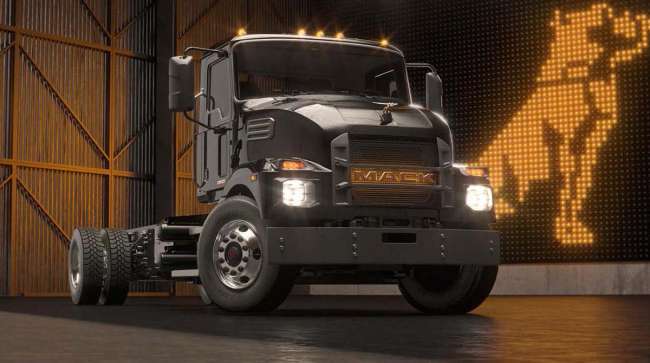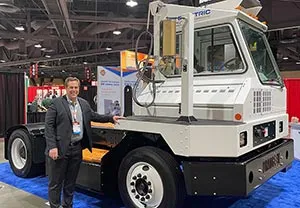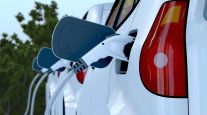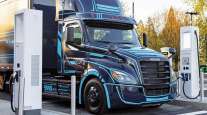Staff Reporter
EPA Seeks Information by June 5 for Clean Energy Programs

[Stay on top of transportation news: Get TTNews in your inbox.]
The U.S. Environmental Protection Agency is seeking information by June 5 on zero-emission heavy trucks, fueling infrastructure and carbon-free port equipment to craft its clean port and heavy vehicles programs.
EPA will use responses from this information request to help develop two clean energy programs funded by the Inflation Reduction Act. One is the Clean Heavy-Duty Vehicles Program, with $1 billion available in grants and rebates to spur the use of zero-emission Class 6 or 7 vehicles. The other new effort is the $3 billion Grants to Reduce Air Pollution at Ports Program.
The Clean Ports Program is to encourage the purchase or installation of zero-emission port equipment or technology that is used or directly serves at least one port. It also will fund development of port climate action plans as well as planning/permitting regarding buying or installing green port equipment/technology.
EPA, in its information request, noted there is a wide range of electric and hydrogen vehicles and equipment that are increasingly being offered for sale in the commercial truck and ports markets.

CEO Wayne Mathisen with Orange EV's electric yard truck model. (Jerry Hirsch for Transport Topics)
“Given the wide range of potential vehicles and equipment that could be considered for funding under the Clean HDV and Clean Ports Programs, EPA believes it is critical to provide an opportunity for all stakeholders (e.g., manufacturers, distributors, installers, fleet operators, port operators) to share information about their products and firsthand experience with zero-emission technologies if they so choose, in order to give EPA the broadest understanding possible of potential vehicles and equipment eligible to fund,” the agency stated.
Input is being sought from fleets, manufacturers, ports, municipalities, school districts, utilities and other stakeholders “with zero-emission technology experience or understanding.”
The technologies EPA wants to know more about are zero-emission Class 6 and 7 heavy-duty vehicles (electric or fuel cell delivery trucks, refuse trucks, utility trucks, school buses and day cab tractors) as well as associated charging and other fueling infrastructure.
Information is also being sought on carbon-free port equipment such as electric or fuel cell drayage trucks, harbor craft, locomotives and cargo handling equipment. EPA wants to hear about the pricing such as life cycle costs compared to existing ones using conventional fuels and practical considerations for program design (best practices and workforce training needs).
“EPA is especially interested in comments detailing the availability, market price and performance of zero-emission trucks, zero-emission port equipment, electric charging and other fueling infrastructure needs for zero-emission technologies in the near term (1-3 years, and 1-5 years for port equipment), and whether the components of these systems are manufactured in the United States,” stated the request in document EPA-HQ-OAR-2023-0216-0001.
Officials want respondents to explain if equipment and components are U.S.-made or will be in the near future so it can better tailor funding programs and address Build America Buy America (BABA) requirements.
Although BABA mandates that infrastructure projects paid for by federal dollars must use U.S.-produced iron, steel, manufactured products and construction materials, it allows EPA to issue certain waivers, but federal approval depends on such considerations as price and availability of domestically sourced materials and goods.
Want more news? Listen to today's daily briefing above or go here for more info
EPA especially wants to understand the “availability and differences in zero-emission Class 6 and 7 trucks, zero-emission trucks that serve ports and port equipment as well as their related charging and fueling infrastructure requirements. This information will enable EPA to effectively design programs to expeditiously fund currently available zero-emission technologies as well as consider allowances, such as longer project time frames, for specific technologies.”
After considering information from stakeholders, EPA officials will hold discussions with other federal, state and private sector stakeholders to evaluate ways to support other funding opportunities.




